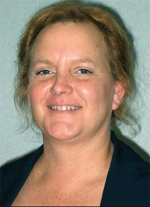
 |
| Carrie Higbie |
see some demand from SMEs for a hosted service and may host a Mitel or Cisco switch ourselves to serve these users. The managed service market is more of a play for Prime where we can provide adds, moves and changes, software upgrades and put a roadmap in place for our customers.
No vendor should recommend that you go against the standards. Recabling is more expensive than running the initial cables. If the cable is in conduit, recabling later may require replacement of conduits to maintain the recommended fill ratios.
Redundancy is just as important for your network devices as for your servers and data. Built-in switches should not act as standards workarounds, as they create a situation where the single cable becomes shared media. For example, while you are working on your PC, you may also be splitting your bandwidth with a voice call. If the only cable available is damaged, you have two devices down until a new cable can be run. In short – don’t trust your business to a workaround for legacy applications.
There is also a growing trend in the industry to sell products such as VoIP or WiFi by suggesting that savings can be made by reducing expenditure on others, like cabling. On the surface this may sound like a good idea, but in the long run this may not be the case. For example, in a wireless environment, around 20 users utilise a single access point. If the access point fails a cabled alternative should be available. Consider having dual drops to each access point for redundancy. The alternative is 20 very unhappy users. The product and installation costs are minimal compared to downtime costs and emergency visits to correct the problem.
In spaces that are large, it is customary to run two cabling connections on opposite walls to allow for moving furniture, adding transient connections for visitors and temporary staff. This also helps to assure that the entire channel, including patch cords, does not exceed the maximum distance which will affect performance. A practice that is being seen commonly in today’s savvy designs is to provide cables not only for workstations, but additional connectivity run to ceiling locations for video cameras, wireless access points, dedicated network printing and other shared peripheral devices. Another common practice is to cable with copper and run additional fibre connections that may be dark. Expandability is key. Anytime that cabling pathways are revisited, there is a risk of harming what is already there.
In shared tenant spaces where walls move and light fixtures move companies are better off with their cables run so that sources of interference (EMI) don’t get moved too close to existing cables. This is very hard to do when there are cables randomly run here and there. Many building owners are now precabling office spaces with enough outlets to assure that end-users won’t have to recable when they lease the space. This also allows them to charge a premium for so-called ‘smart spaces.’ The converse is also true, if recabling is going to be necessary, the price will be adjusted down.
Think of work areas as someone’s home. The aim is for end-users to be comfortable, enabled and have the resources necessary to do their jobs. Each work area should be ergonomically friendly and safe from hazards, including power and connectivity not being run on the floor. The space should accommodate visitors and be functional. Offices move, people move, and even the functionality of rooms change. If properly planned, these moves can be accomplished with little additional expense. If poorly planned, they will drain even the best thought out budgets.
Established in 1903, Siemon is an industry leader specialising in the manufacture and innovation of high quality, high-performance network cabling solutions. Headquartered in Connecticut, USA, with global offices and partners throughout the world, Siemon offers a comprehensive suite of copper (unshielded and shielded twisted-pair) and fibre cabling systems available. With over 400 active patents specific to structured cabling, Siemon Labs invests heavily in R&D and development of industry standards, underlining the company's long-term commitment to its customers and the industry.
| www.siemon.com |
